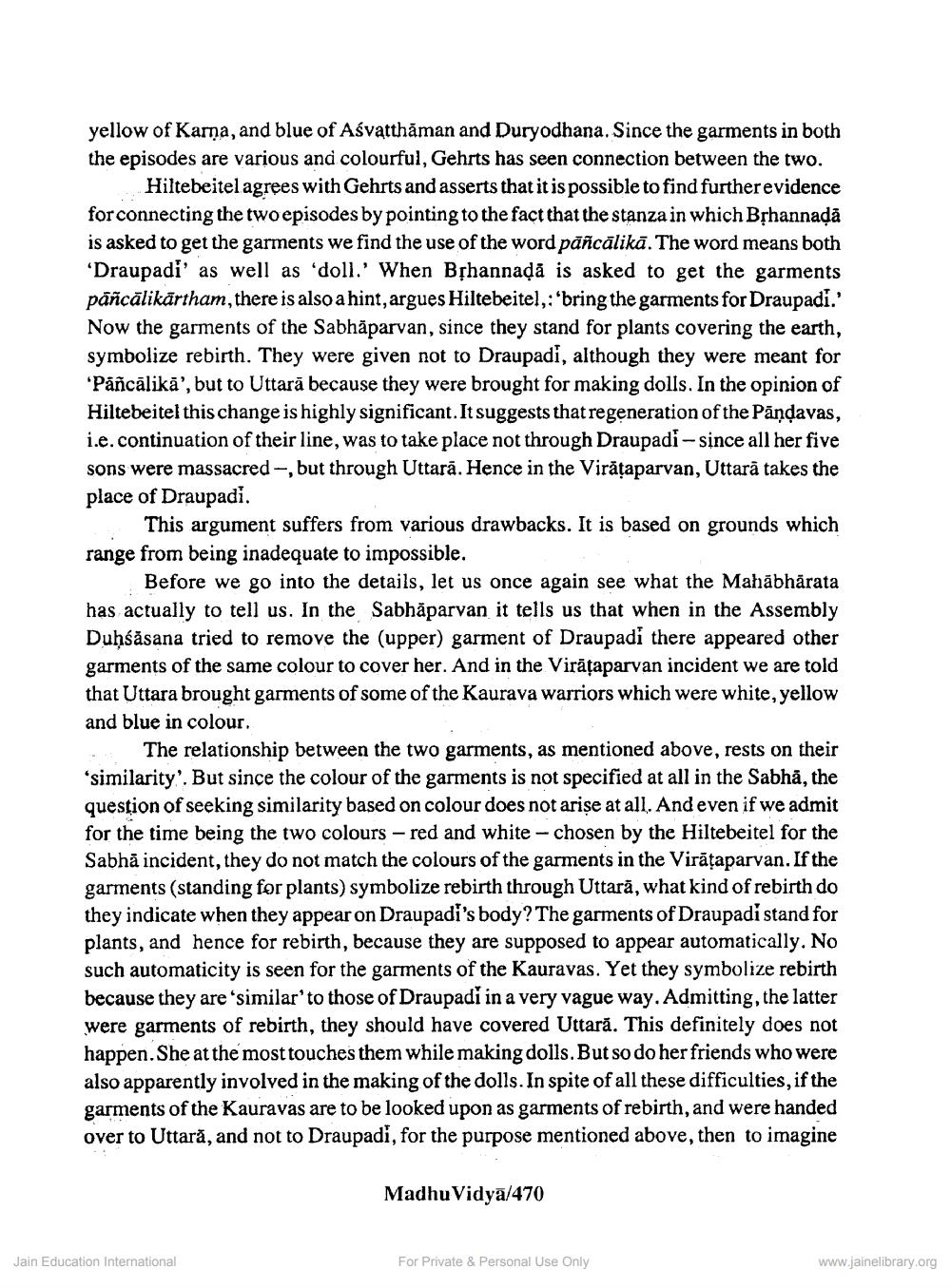________________
yellow of Karna, and blue of Aśvatthăman and Duryodhana. Since the garments in both the episodes are various and colourful, Gehrts has seen connection between the two.
Hiltebeitel agrees with Gehrts and asserts that it is possible to find further evidence for connecting the two episodes by pointing to the fact that the stanza in which Brhannada is asked to get the garments we find the use of the word pāñcālikā. The word means both *Draupadi' as well as 'doll.' When BỊhannaļā is asked to get the garments pāñcālikārtham, there is also a hint, argues Hiltebeitel,;'bring the garments for Draupadi.' Now the garments of the Sabhāparvan, since they stand for plants covering the earth, symbolize rebirth. They were given not to Draupadi, although they were meant for 'Páñcālikā', but to Uttarā because they were brought for making dolls. In the opinion of Hiltebeitel this change is highly significant. It suggests that regeneration of the Pāņdavas, i.e. continuation of their line, was to take place not through Draupadi-since all her five sons were massacred-, but through Uttarā. Hence in the Virățaparvan, Uttarā takes the place of Draupadi.
This argument suffers from various drawbacks. It is based on grounds which range from being inadequate to impossible.
Before we go into the details, let us once again see what the Mahābhārata has actually to tell us. In the Sabhāparvan it tells us that when in the Assembly Duhsāsana tried to remove the (upper) garment of Draupadi there appeared other garments of the same colour to cover her. And in the Virāțaparvan incident we are told that Uttara brought garments of some of the Kaurava warriors which were white, yellow and blue in colour.
The relationship between the two garments, as mentioned above, rests on their 'similarity'. But since the colour of the garments is not specified at all in the Sabha, the question of seeking similarity based on colour does not arise at all. And even if we admit for the time being the two colours - red and white - chosen by the Hiltebeitel for the Sabhā incident, they do not match the colours of the garments in the Virātaparvan. If the garments (standing for plants) symbolize rebirth through Uttară, what kind of rebirth do they indicate when they appear on Draupadi's body? The garments of Draupadi stand for plants, and hence for rebirth, because they are supposed to appear automatically. No such automaticity is seen for the garments of the Kauravas. Yet they symbolize rebirth because they are similar' to those of Draupadi in a very vague way. Admitting, the latter were garments of rebirth, they should have covered Uttară. This definitely does not happen. She at the most touches them while making dolls. But so do her friends who were also apparently involved in the making of the dolls. In spite of all these difficulties, if the garments of the Kauravas are to be looked upon as garments of rebirth, and were handed over to Uttară, and not to Draupadi, for the purpose mentioned above, then to imagine
Madhu Vidyā/470
Jain Education International
For Private & Personal Use Only
www.jainelibrary.org




